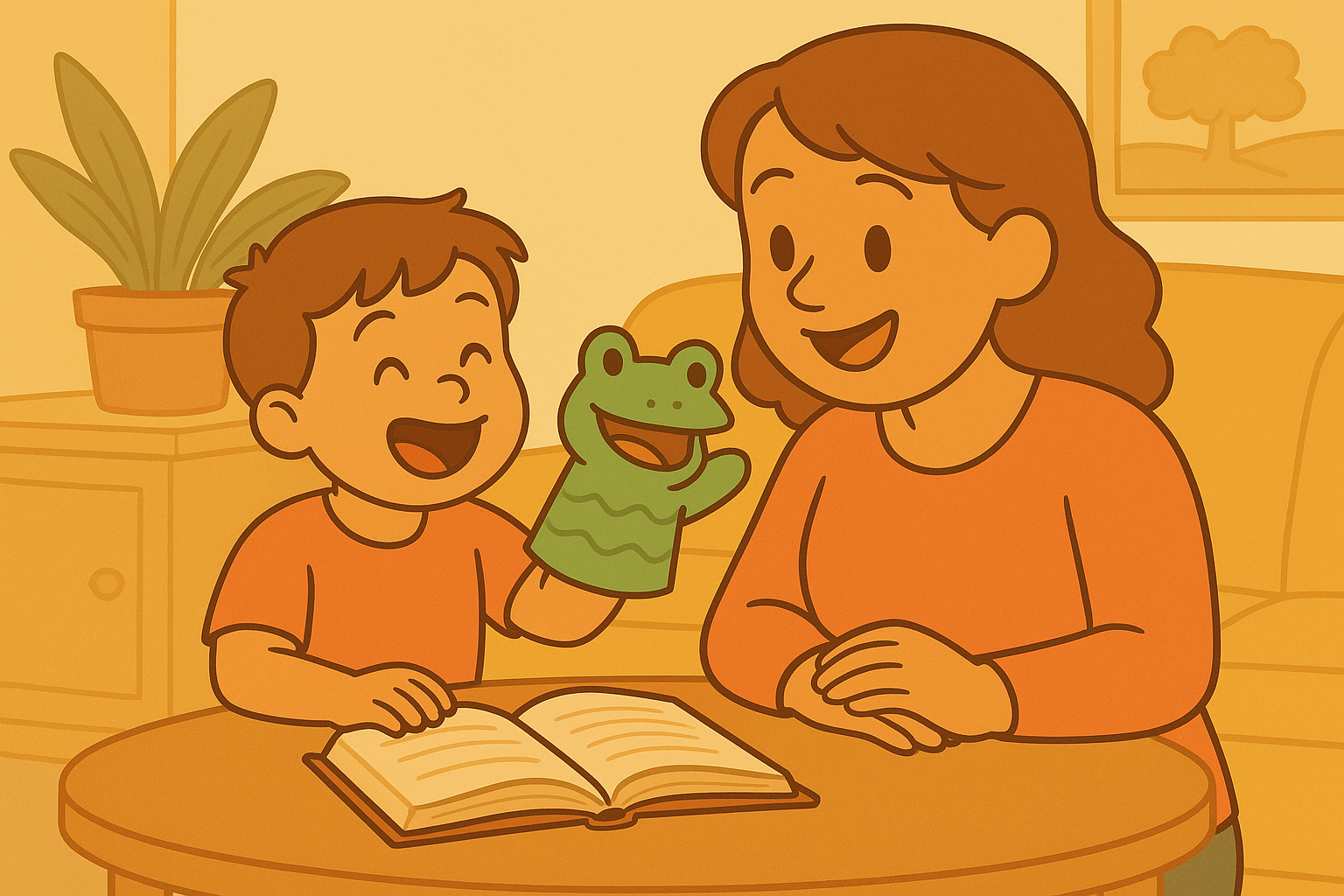Using Puppets to Reenact Books and Stories
Using Puppets to Reenact Books and Stories
Why Puppets Make Storytime Magical
There’s something truly enchanting about a puppet that makes kids lean in, giggle, and remember what they hear. Puppets turn ordinary reading into something active and memorable — a chance for children to live inside the story instead of just listening to it.
When children use puppets to reenact books and stories, they practice comprehension, sequencing, and expressive language — all key ingredients of early literacy. Plus, it’s fun. And when learning feels like play, kids naturally want to do more of it.
(Related read: The Benefits of Reading Aloud Every Day)
How Puppet Play Boosts Early Literacy
Puppets help build reading readiness in several powerful ways:
Comprehension: Retelling a story with puppets helps children remember what happened first, next, and last.
Vocabulary: Acting out dialogue encourages the use of new words and phrases.
Confidence: Shy children often express themselves more freely “through” a puppet.
Creativity: Kids learn to improvise and make connections beyond the original text.
When a puppet retells The Very Hungry Caterpillar or Brown Bear, Brown Bear, your child isn’t just copying — they’re making meaning. They’re turning passive listening into expressive storytelling.
(Try this too: Using Puppet Conversations to Teach Vocabulary)
Step-by-Step: Turning a Story Into Puppet Play
Here’s a simple routine you can use to bring any picture book to life.
1. Read the Story Together First
Read the book aloud in your usual warm, expressive way. Point out key moments — the problem, how the characters feel, and how it ends.
2. Choose or Make Puppets
You don’t need fancy supplies. Use:
Sock or paper bag puppets
Popsicle stick characters
Stuffed animals that “stand in” for story characters
If your child loves crafts, let them decorate their own puppets based on the story. Ownership makes the activity even more meaningful.
3. Act It Out in Order
Guide your child through the sequence: “What happened first?” “Who came next?” “What did they say?” Encourage them to move the puppets while retelling, using the book’s pictures as a guide.
4. Add Expression and Dialogue
Encourage them to change voices or emotions for different characters. Even simple lines like “I’m hungry!” or “Oh no!” bring stories to life.
5. Invite Retelling and Remixing
Once they’ve acted out the story as written, let them change it up — what if Goldilocks said sorry? What if the three bears invited her for pancakes? Remixing builds flexible thinking and storytelling confidence.
Why Retelling Builds Real Reading Power
When children retell stories, they’re using higher-order thinking skills — not just remembering, but organizing, interpreting, and expressing ideas. This kind of play strengthens:
Story structure understanding (beginning, middle, end)
Cause and effect reasoning
Character perspective
Language fluency and sequencing
In classrooms, teachers often use “story re-enactment” as a literacy anchor activity — because it bridges the gap between hearing and understanding.
(Also read: Story Retelling Activities That Build Comprehension)
Turning Favorite Books Into Family Plays
Make puppet reenactment a cozy family tradition. Pick a favorite bedtime book and assign roles — parent plays the narrator, your child controls the characters. Even siblings can join in, creating a little living-room “theater.”
To make it extra special:
Create a small stage with a cardboard box or behind the couch
Add paper backgrounds or props (trees, houses, clouds)
Use gentle music for mood
Record the performance to watch later together
Kids adore seeing themselves as the storyteller. It turns storytime into their show — one that builds both literacy and confidence.
What if My Child Doesn’t Want to Perform?
Not every child wants to put on a show, and that’s okay. You can start small:
Have the puppet “ask questions” about the story (“Why do you think the bear was sad?”)
Let your child respond to the puppet instead of acting it out
Use puppets for dialogue reading, where you and your child take turns being characters
Sometimes, simply talking with a puppet is enough to spark imagination and engagement.
(Related read: Turning Playtime Into a Language-Rich Experience)
Mixing Movement and Storytelling
Combine movement games with puppet retelling to boost memory and focus:
Have the puppet move through the story — jumping when a frog hops, tiptoeing through a forest, or “swimming” across the table
Create a story path on the floor with taped-down paper “scenes”
Let your child physically travel through the narrative as they tell it
This approach ties language to action — reinforcing comprehension through kinesthetic play.
Bringing It All Together
Puppets are more than toys; they’re storytelling partners that make reading come alive. When kids use them to retell favorite books, they’re learning to think in sequence, remember details, and express ideas with emotion and creativity.
So next storytime, grab a puppet, turn off the pressure, and turn up the play. You’ll be amazed at how much your child remembers — and how much they love learning through it.
Fuzzigram’s Favorite Story Reenactment Ideas
“Three Little Pigs” puppet show with paper-bag pigs and a wolf sock
Retell “The Very Hungry Caterpillar” using play food and a butterfly puppet
Family performance of “Brown Bear, Brown Bear” with animal cutouts
DIY bedtime stories — let your child invent a new ending each night
“Story swap”: parent starts the story, child finishes with a puppet twist
This content is for educational purposes and is not a substitute for professional medical or psychological advice.
Popular Parenting Articles




